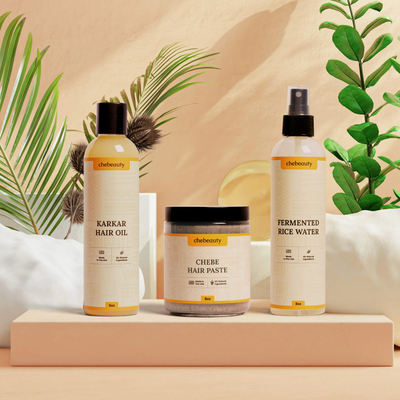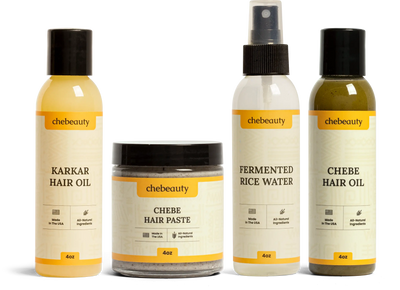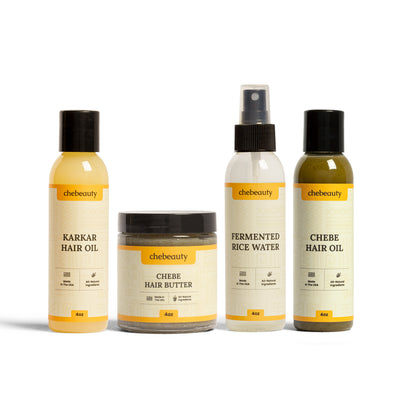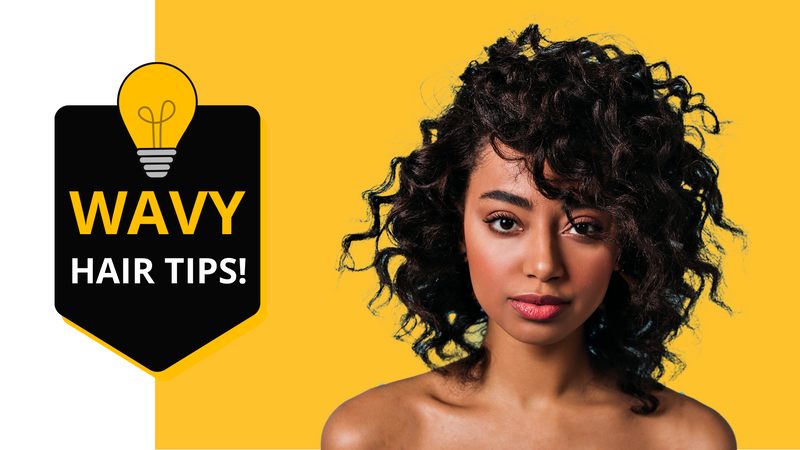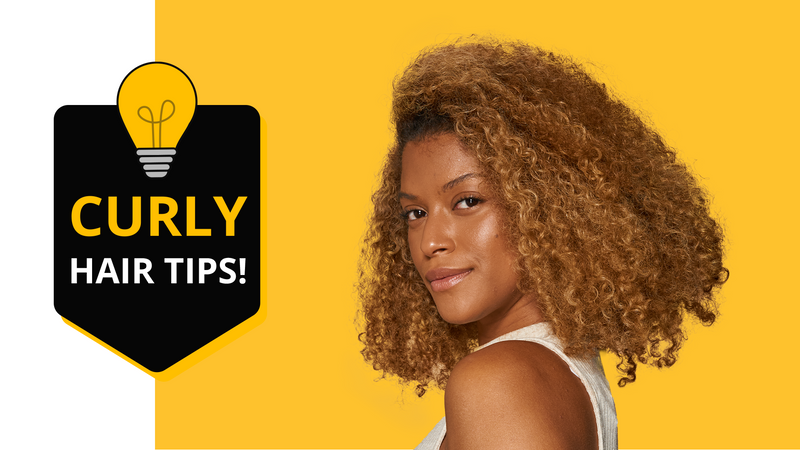For those out there blessed with natural curls, the battle against frizz can often feel like an ongoing struggle. Whether it's the frustration of uncontrollable flyaways or the constant quest for smooth, defined curls, finding the right solutions is key to embracing and enhancing your curly locks. That’s why we have put together this comprehensive guide on taming curly hair frizz, where we delve into the all of the key details to managing your beautiful locks with ease.
Brief Overview of the Challenges Faced by Individuals with Naturally Curly Hair
Curly hair comes with its own set of unique challenges. From unpredictable weather conditions to the constant battle against humidity-induced frizz, those with curly locks understand the daily dilemma of maintaining a sleek and polished look. The struggle to keep curls from frizzing can often feel like an uphill battle, but fear not – with the right knowledge and techniques, achieving smooth, frizz-free curls is entirely possible.
Importance of Understanding the Causes of Frizz for Effective Management
Understanding the root causes of frizz is crucial for effective management. While factors like humidity and weather play a significant role, there are also internal factors such as hair porosity and texture that contribute to frizz. By gaining insights into these underlying causes, you can tailor your approach to frizz control and adopt strategies that address your specific hair needs.
Preview of the Solutions and Techniques to Be Discussed
In this blog, we'll explore a range of solutions and techniques to help you tame curly hair frizz effectively. From incorporating the right products into your hair care routine to adopting styling techniques that promote smoothness and definition, we've got you covered. Say goodbye to frizz-induced frustrations and hello to beautifully smooth curls that are sure to turn heads. Let's embark on this journey to discover the secrets of frizz control for curly hair together!
Understanding Curly Hair Frizz
Frizz is the unwelcome guest that can turn a good hair day into a bad one in the blink of an eye. It's characterized by those annoying flyaway strands that seem to have a life of their own, disrupting the smooth texture and definition of curls. That’s why despite the beauty of curly hair, it can often feel frustrating when trying to deal with its downsides - frizz being one of them.
Definition of Frizz and Its Impact on Curly Hair
Frizz isn't just a minor inconvenience - it can significantly impact the overall look and feel of curly hair. You spend time meticulously styling your curls, only to step outside and encounter a wave of humidity that turns your carefully crafted coils into a fuzzy mess. Frizz not only detracts from the aesthetic appeal of curly hair but can also affect its manageability and overall health.
Frizz can disrupt the natural pattern of curls, causing them to lose their shape and bounce. Instead of showcasing smooth, defined coils, your hair may appear dull, dry, and lacking in vitality. This can be frustrating for those who take pride in their curly locks and strive to maintain their natural beauty.
Common Causes of Frizz in Curly Hair
Environmental Factors: One of the primary reasons behind curly hair frizz is the environment. Humidity, in particular, feels like a constant foe with curly hair, causing it to absorb moisture from the air and swell. This swelling disrupts the pattern of the curls, leading to frizz. Similarly, changes in weather conditions, such as rain or extreme heat, can also affect the behavior of curly hair and contribute to frizz formation.
Hair Porosity and Texture: The porosity and texture of curly hair play a significant role in its susceptibility to frizz. High porosity hair, which has raised cuticles, tends to absorb moisture quickly but struggles to retain it, leading to frizz in humid conditions. On the other hand, low porosity hair may repel moisture, causing frizz in dry environments. Additionally, the texture of curly hair—whether fine, coarse, or somewhere in between—can influence its tendency to frizz.
Damaged Hair Cuticles: The outer layer of the hair, known as the cuticle, acts as a protective barrier. When the cuticle is damaged due to heat styling, chemical treatments, or rough handling, it becomes less effective at sealing in moisture and protecting the hair shaft. As a result, the hair becomes more prone to frizz, as moisture can easily penetrate the damaged cuticle and disrupt the hair's natural structure.
Incorrect Hair Care Practices: Sometimes, the very habits we adopt to care for our hair can contribute to frizz. Using harsh shampoos that strip the hair of its natural oils, over-washing, or rough towel-drying can disrupt the moisture balance of curly hair, leaving it dry, brittle, and prone to frizz. It's essential to adopt gentle cleansing and styling practices that nourish and protect the hair, rather than exacerbating frizz-causing factors.
Understanding these common causes is the first step toward effectively managing frizz in curly hair. In the following sections, we'll explore practical strategies and techniques for keeping frizz at bay, allowing you to embrace your curls with confidence and style.
How to Keep Curly Hair from Frizzing
Frizz can often feel like an inevitable part of having curly hair, but with the right techniques and practices, it's possible to minimize its impact and maintain smooth, defined curls for an extended period of time. In this section, we'll explore a comprehensive approach to frizz prevention, from establishing a proper hair care routine to incorporating daily techniques for managing frizz effectively.
Proper Hair Care Routine for Frizz Prevention
Establishing a proper hair care routine lays the foundation for frizz prevention and ensures that your curls remain healthy, hydrated, and free from flyaways. Here are some essential steps to incorporate into your routine:
Cleansing and Conditioning Techniques
Start with a gentle shampoo such as Chebe Shampoo to cleanse your hair without stripping away its natural oils. Follow up with a rich, hydrating conditioner like Chebe Leave-In Conditioner to nourish and moisturize your curls, focusing on the lengths and ends.
Use of Appropriate Styling Products
Choose styling products specifically formulated for curly hair, such as curl creams, and serums. These products help to define curls, control frizz, and provide long-lasting hold without weighing down the hair. Experiment with different products to find what works best for your hair type and texture.
Protective Styling Methods
Embrace protective hairstyles, such as braids, twists, or buns, to minimize exposure to environmental factors that can cause frizz. Additionally, consider using satin or silk hair accessories, such as scrunchies or pillowcases, to reduce friction and prevent breakage while sleeping.
Techniques for Managing Frizz on a Daily Basis
In addition to establishing a proper hair care routine, incorporating daily techniques for managing frizz is essential for maintaining smooth, well-defined curls. Here are some effective strategies to consider:
Plopping Method
Plopping is a popular styling technique that involves wrapping wet hair in a t-shirt or microfiber towel to enhance curl definition and minimize frizz. Simply apply your styling products, then gently scrunch your hair upward and secure it in the fabric for 10-20 minutes before allowing it to air dry or diffusing.
Diffusing Hair Instead of Air Drying
Instead of letting your hair air dry, consider using a diffuser attachment on your blow dryer to speed up the drying process while minimizing frizz. Use a low heat setting and scrunch your hair upward with the diffuser to encourage natural curl formation and reduce frizz.
Avoiding Excessive Touching and Manipulation
Resist the temptation to touch or manipulate your curls throughout the day, as this can disrupt their natural pattern and lead to frizz. Instead, allow your curls to air dry or set them in place with a diffuser, then refrain from touching them until they are fully dry and set.
Frizz Control for Curly Hair
Frizz control is paramount for those embracing their natural curls, and selecting the right products plays a crucial role in achieving smooth, well-defined locks. In this section, we'll explore effective frizz control products tailored to the unique needs of curly hair, offering hydration, nourishment, and protection against environmental triggers.
Overview of Effective Frizz Control Products
Anti-Frizz Oils: Among the arsenal of frizz-fighting oils, options like argan oil, coconut oil, Chebe oil, and Karkar oil stand out. These lightweight oils penetrate the hair shaft, delivering intense hydration and sealing the cuticle to prevent moisture loss. A dab of these oils on damp or dry hair, paying special attention to frizz-prone areas, adds shine and tames flyaways without weighing down curls.
Moisturizing Hair Butters: When it comes to deep hydration and nourishment, hair butters are go-to products. Shea butter, coconut butter, and Chebe Hair Butter are enriched with nutrients to replenish dry, damaged strands. These rich, creamy formulas restore softness, elasticity, and shine, offering protection against frizz throughout the day.
Gentle Shampoos & Leave-in Conditioners: The foundation of a frizz control routine lies in gentle cleansing and moisturizing. Opt for options like Chebe shampoo, which cleanse without stripping natural oils, followed by Chebe leave-in conditioner for hydration and detangling. These products are designed to nourish and protect curls, keeping frizz at bay while maintaining moisture balance.
Tips for Choosing the Right Products for Individual Hair Types and Needs
To optimize your frizz control routine, consider the following tips when selecting products for your curly hair:
Know Your Hair Type
Understand your hair's characteristics, such as porosity, density, and texture, to tailor product selection. If have 3A curls than you might require different treatment than if you have 3C locks, for instance. Fine hair may benefit from lightweight, volumizing formulas, while coarser textures may require richer, more emollient products for hydration.
Address Specific Needs
Identify any specific concerns, such as dryness, damage, or frizz, and choose products that target these issues. Look for ingredients like Chebe powder, known for its strengthening and protective properties, as well as botanical extracts and oils for moisture and nourishment.
Read Product Labels
Pay attention to ingredient lists, avoiding harsh chemicals like sulfates, parabens, and silicones that can exacerbate frizz. Instead, opt for natural, botanical-based formulas, which are gentle on the hair and scalp.
By incorporating the right frizz control products into your curly hair routine, you can effectively manage frizz and embrace beautifully defined curls with confidence and pride. Experiment with different products and techniques to discover what works best for your hair, and revel in the beauty of your natural curls.
How to Stop Curly Hair from Frizzing: Styling Tips
Maintaining frizz-free curls involves not only selecting the right products but also mastering styling techniques that enhance curl definition while minimizing frizz. In this section, we'll explore techniques to elevate your styling game, ensuring your curls remain smooth, defined, and free from flyaways.
Techniques for Enhancing Curl Definition and Reducing Frizz
Finger Coiling: Finger coiling is a styling technique that involves wrapping small sections of hair around your finger to encourage curl formation and enhance definition. Start with damp hair and apply a curl-enhancing product, then twist small sections around your finger, working your way through your hair. This method helps to encourage uniform curls and minimize frizz, resulting in a more polished look.
Scrunching with a Microfiber Towel: After applying styling products, gently scrunching your hair with a microfiber towel helps to remove excess moisture while encouraging curl formation. Microfiber towels are gentle on the hair and help to minimize friction, reducing the risk of frizz. Avoid using regular towels, which can cause friction and disrupt the hair's natural pattern, leading to frizz.
Using a Wide-Tooth Comb or Detangling Brush: When detangling curly hair, opt for a wide-tooth comb or a detangling brush to minimize breakage and prevent frizz. Start from the ends of your hair and work your way up, gently removing knots and tangles without pulling or tugging. This helps to maintain the integrity of your curls while minimizing frizz and preventing damage.
Heat Styling Tips for Minimizing Frizz and Maintaining Curls' Integrity
While heat styling can be a useful tool for enhancing curl definition, it's essential to use heat responsibly to minimize frizz and preserve the health of your curls. Follow these tips for achieving stunning curls without sacrificing their integrity:
Proper Use of Heat Protectants
Before heat styling, always apply a heat protectant spray or serum to protect your hair from damage caused by high temperatures. Heat protectants create a barrier between your hair and the heat styling tool, minimizing moisture loss and reducing the risk of frizz and breakage.
Choosing the Right Heat Styling Tools
Opt for heat styling tools with adjustable temperature settings and ceramic or tourmaline plates, which distribute heat evenly and minimize heat damage. Choose a barrel size that complements your curl pattern, allowing you to achieve your desired curl size and shape without excessive heat exposure.
Limiting Heat Exposure Frequency
While heat styling can be tempting, it's important to limit its frequency to prevent damage and maintain the health of your curls. Whenever possible, embrace heat-free styling techniques like air drying or diffusing to minimize heat exposure and preserve your curls' natural texture and integrity.
By mastering these styling techniques and adopting heat styling tips, you can effectively minimize frizz and enhance the definition of your curly hair, ensuring your locks remain smooth, shiny, and healthy. Experiment with different methods to find what works best for your hair, and enjoy the confidence that comes with beautifully styled curls.
Conclusion
As we conclude our exploration of taming frizz for those with curly hair, let’s go over the valuable insights and tips shared throughout this blog. Embracing and managing curly hair can indeed be a journey filled with challenges, but armed with the right knowledge and techniques, achieving smooth, frizz-free curls is entirely within reach.
Recap of Key Points Discussed in the Blog
Throughout this blog, we've delved into various aspects of frizz control for curly hair, covering everything from understanding the causes of frizz to selecting the right products and mastering styling techniques. We've explored the impact of environmental factors, hair porosity, and incorrect hair care practices on frizz formation, as well as the importance of choosing gentle, nourishing products tailored to individual hair needs.
Encouragement for Individuals with Curly Hair to Experiment with Different Techniques and Products
To all individuals navigating the world of curly hair, we encourage you to embrace experimentation and exploration. Your curly hair is uniquely beautiful, and finding the right techniques and products that work for you may require some trial and error. Don't be afraid to step out of your comfort zone, try new styling methods, and discover the products that bring out the best in your curls.















